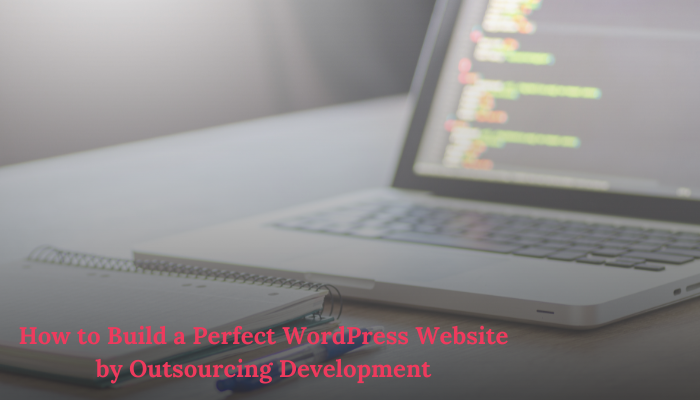Creating a professional WordPress website requires technical expertise, time, and effort. If you’re not a developer or lack the time to build a website yourself, the best solution is to outsource WordPress development. Outsourcing allows you to leverage the skills of experienced professionals while focusing on other critical aspects of your business.
In this guide, we’ll explore the key steps to successfully outsource WordPress development, ensuring you get a high-quality website that meets your needs.
Why Outsource WordPress Development?
Outsourcing your WordPress website development offers numerous advantages, including-
- Cost-effectiveness- Hiring an in-house developer can be expensive. Outsourcing allows you to get professional services at a fraction of the cost.
- Access to expertise- Professional WordPress developers have extensive experience, ensuring high-quality work.
- Faster turnaround- A skilled development team can complete your website efficiently, reducing time-to-market.
- Focus on core business- Instead of spending time on website development, you can concentrate on marketing, sales, and customer engagement.
Steps to Successfully Outsource WordPress Development
1. Define Your Website Requirements
Before you start looking for developers, clearly outline your website’s purpose and features. Ask yourself-
- What is the goal of my website?
- What features and functionalities do I need (e.g., e-commerce, membership area, blog)?
- Do I need a custom theme or a pre-built theme customization?
- What is my budget and deadline?
Having a well-defined project scope will help you find the right professionals and avoid scope creep.
2. Choose the Right Outsourcing Model
There are different ways to outsource WordPress development. Your choice depends on your budget, project complexity, and level of involvement.
Freelancers
- Best for small projects or minor customizations.
- Platforms like Invedus, Fiverr, and Toptal have many skilled freelancers.
- Affordable but requires careful vetting.
Development Agencies
- Suitable for complex projects requiring a team effort.
- Offers end-to-end services, including design, development, and maintenance.
- Typically more expensive than freelancers but ensures higher quality.
Dedicated Teams
- Ideal for long-term projects requiring continuous development.
- You get a dedicated team working exclusively on your website.
- Best for businesses looking for ongoing support and maintenance.
3. Find and Vet WordPress Developers
Once you’ve chosen an outsourcing model, the next step is to find and vet developers. Here’s how:
- Check portfolios- Look for past projects similar to yours.
- Read reviews and testimonials- Platforms like Clutch, GoodFirms, and Upwork provide client feedback.
- Assess technical skills- Ensure they are proficient in WordPress, PHP, JavaScript, HTML, and CSS.
- Communication and responsiveness- Developers should be easy to communicate with and respond promptly.
- Request references- Ask for previous client contacts to verify their work.
4. Set Clear Expectations and Milestones
A successful outsourcing project requires clear communication. Establish-
- Project timeline- Break the project into phases with deadlines.
- Deliverables- Define what will be provided at each stage.
- Payment structure- Use milestone-based payments to ensure accountability.
- Communication channels- Use tools like Slack, Trello, or Asana for project management.
5. Ensure Quality Control and Testing
Quality assurance is critical when you outsource WordPress developer. Ensure the following-
- Responsive design- The website should work on all devices.
- Fast loading speed- Optimize images, use caching, and follow best performance practices.
- SEO optimization- Ensure the website follows SEO best practices.
- Security measures- Implement SSL, secure login credentials, and regular backups.
6. Plan for Website Maintenance and Support
After launching your website, ongoing maintenance is essential. Discuss post-launch support with your outsourcing partner, including-
- Regular updates for WordPress core, themes, and plugins.
- Security monitoring and bug fixes.
- Performance optimization and backups.
7. Manage and Monitor Your Outsourced Project
Even after outsourcing, staying involved ensures your project stays on track. Regular check-ins, progress reports, and feedback loops help maintain quality and alignment with your goals.
Common Mistakes to Avoid When Outsourcing WordPress Development
1. Not Defining Clear Requirements
Unclear goals can lead to miscommunication and project delays. Be specific about what you need.
2. Choosing Based on Price Alone
Cheaper isn’t always better. Prioritize experience and quality over low costs.
3. Ignoring Communication and Availability
Ensure your developer is available in your time zone or provides timely responses.
4. Skipping Testing and Quality Assurance
Always test your website thoroughly before launch to avoid functionality issues.
At Invedus, their offshore WordPress developers offer a comprehensive range of services to clients worldwide. When you choose to hire WordPress programmers in India from Invedus, you can trust that our solutions will be seamlessly integrated with your existing business model for maximum efficiency and effectiveness.
Afterword
Outsourcing WordPress development is an excellent strategy for building a high-quality website while saving time and money. By following the steps outlined in this guide, you can successfully outsource WordPress development and achieve a professional, efficient, and scalable website.
Whether you hire freelancers, an agency, or a dedicated team, setting clear expectations, maintaining communication, and ensuring quality control will help you get the best results. Ready to build your perfect WordPress website? Start outsourcing today!
If you are read more Blog Explore this Website Also- https://theguestblogs.com/






